The Great Big Assen Study Tour Roundup
Last summer I had the pleasure of spending three days in Assen (and Groningen) on a David Hembrow study tour. This was my second study tour; I had previously been on the 'official' Cycling Embassy study tour back in 2011. You can read David's account of that trip here, as well as David Arditti's, and (former Embassy chair) Jim Davis' account. Clare Prospert also visited in 2012.
That 2011 trip was a revelation for me, and the other people on it. Reading about the Netherlands and its cycling environment online, and seeing pictures of it, simply didn't compare to the actual experience of pedalling around, and seeing for oneself the ease, comfort and convenience of cycling in these two cities. How it all fitted together; how the main road infrastructure merged seamlessly with neighbourhoods with motor traffic deliberately designed out, leading to 100% separation of cycles and motor traffic. The ubiquity of cycling - it was a mode of transport for everyone, not just a subset of the population, the 'traffic tolerant'.
Things have moved on a lot since 2011, of course. At the time, those of us on the trip - and many others - were battling to convince other cycling campaigners of the need to ask for the right things. In 2015 the battle is very different - it's now a question of convincing the general public of the benefits of mass cycling, and why reallocating road space, and changing the way residential streets are accessed by motor traffic, is a good thing, for everyone.
So I went back to Assen, naturally enough, with a very different perspective - principally, to see how cycling works in urban areas, and how it creates better towns and cities. But of course I also wanted to see the good and bad elements of infrastructure design in the Netherlands - things that I might have missed back in 2011 because they weren't really on the radar then, because the UK hadn't really embarked on building any new cycling infrastructure of any note back then.
Perhaps the most striking thing about Assen is that aforementioned ubiquity of cycling, striking even when you have seen it before and are expecting it. There really isn't any such thing as 'cyclists' here, any more than a typical British town is full of 'walkists'. It's just a mode of transport people use without even thinking about it, in much the same way as they walk out of the house to go the shops, or pop in the car to visit the relatives, just as their equivalents might in the UK. Indeed, cycling here is really just an extension of walking. People dress as they would if they were just walking about, and they do the same kinds of things they might do if they were walking about - chat on their phones, talk to their friends, eat food, and so on.

There's absolutely no question of special equipment, or special bikes, or cycling not being suitable for any segment of the population. Everyone rides, and they do so because it is an easy, comfortable, safe and direct way to get from A to B.
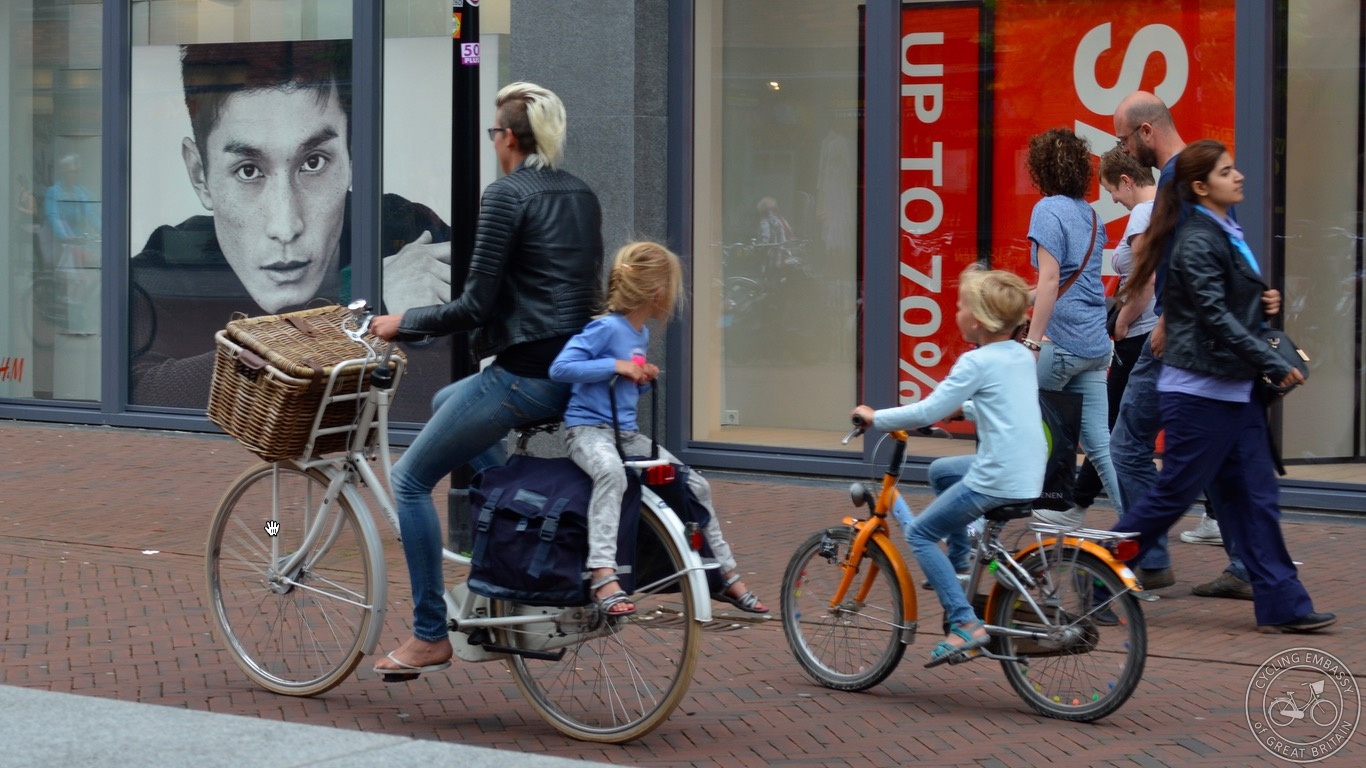
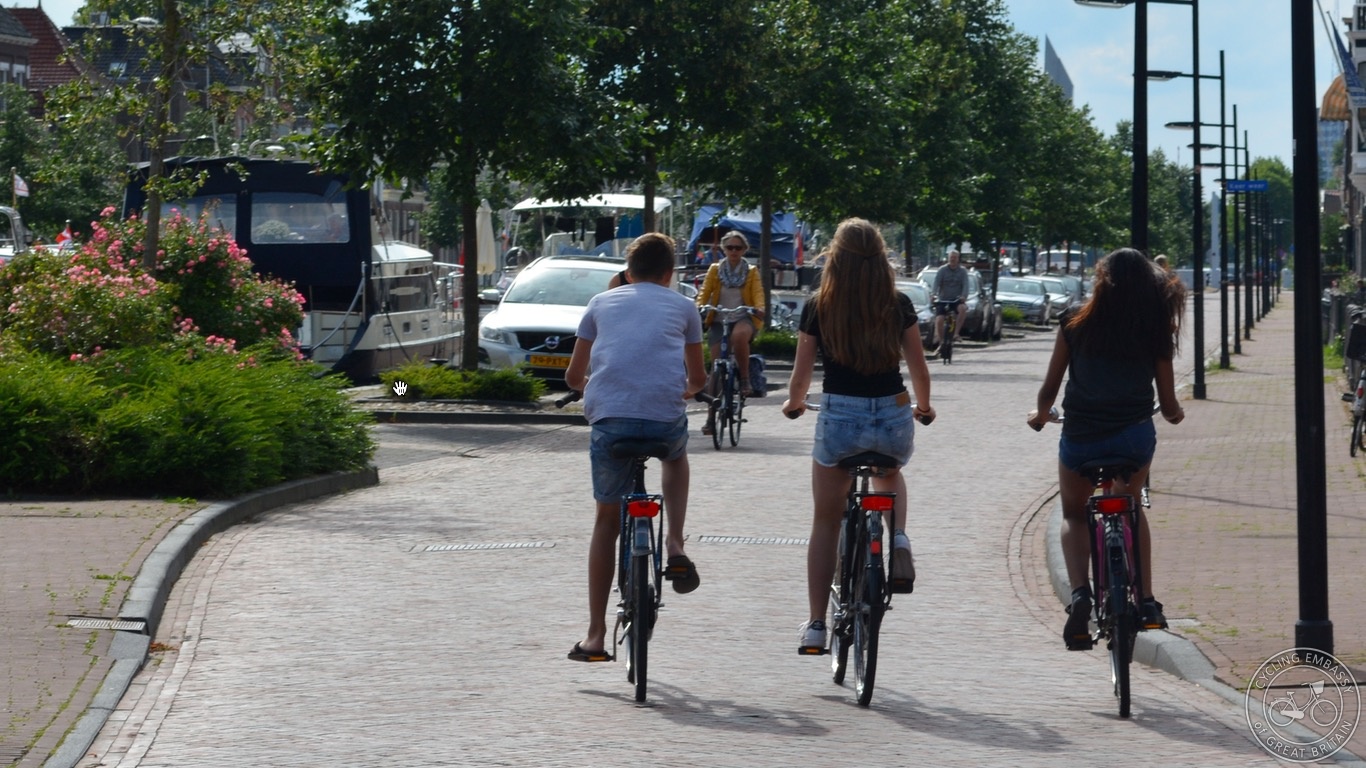

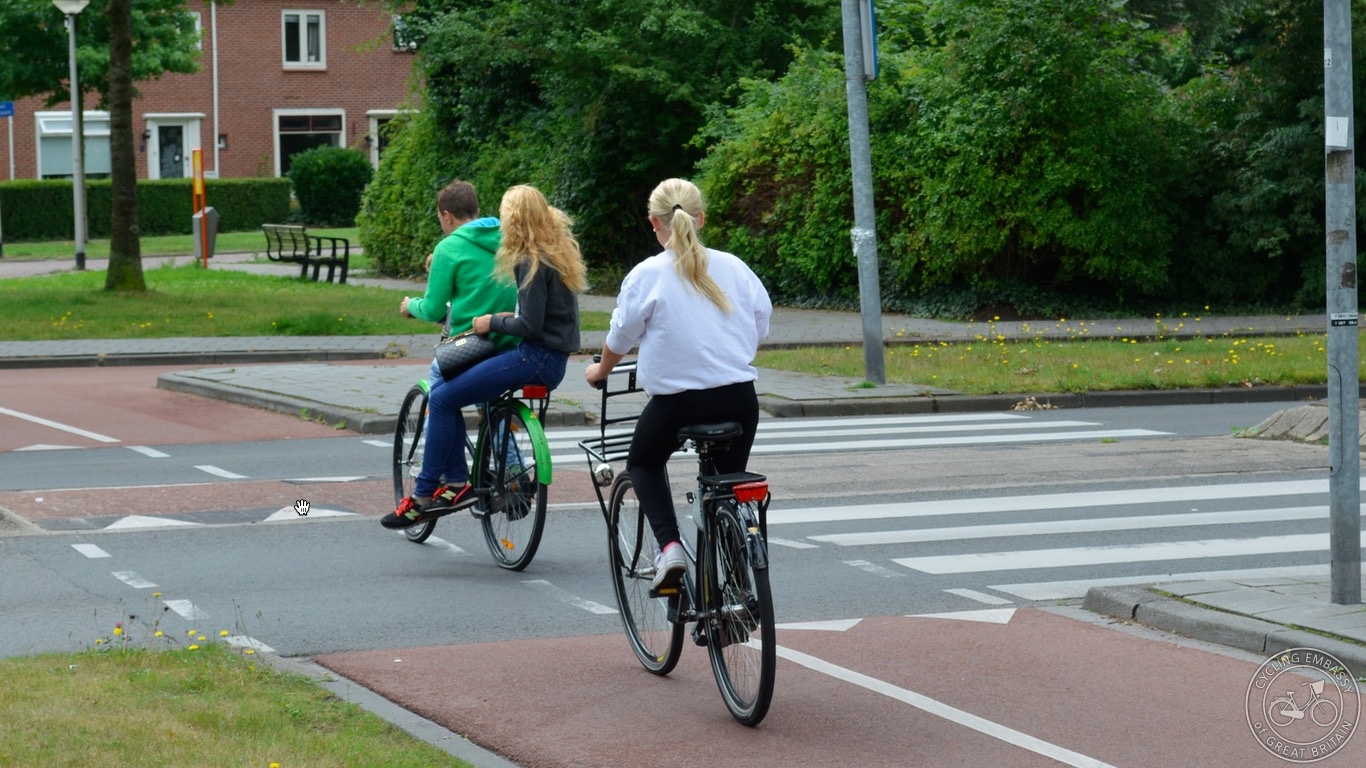
It is crystal clear that the safety record for cycling in Assen - far, far superior to anywhere similar in Britain - has not been achieved by modifying people's behaviour, or by getting them to wear special equipment. It's been achieved through creating safe environments, places where people can make mistakes, and that can accommodate people pratting about, with negligible consequences, and where even if mistakes do lead to collisions, they are likely to be minor.
It is also worth stressing that the range of cycling - from the very young to the very old - makes the safety record even more impressive. On this trip, in late July, the schools were out for the summer holidays, so there was not the thick mass of children all emerging from school at the same time, but kids were out and about throughout the day, either cycling completely independently with friends, or with their parents. Cargo bikes are actually quite rare in places like Assen and Groningen, because the environment allows children are able to pedal themselves around from almost the point at which they learn to ride a bike.

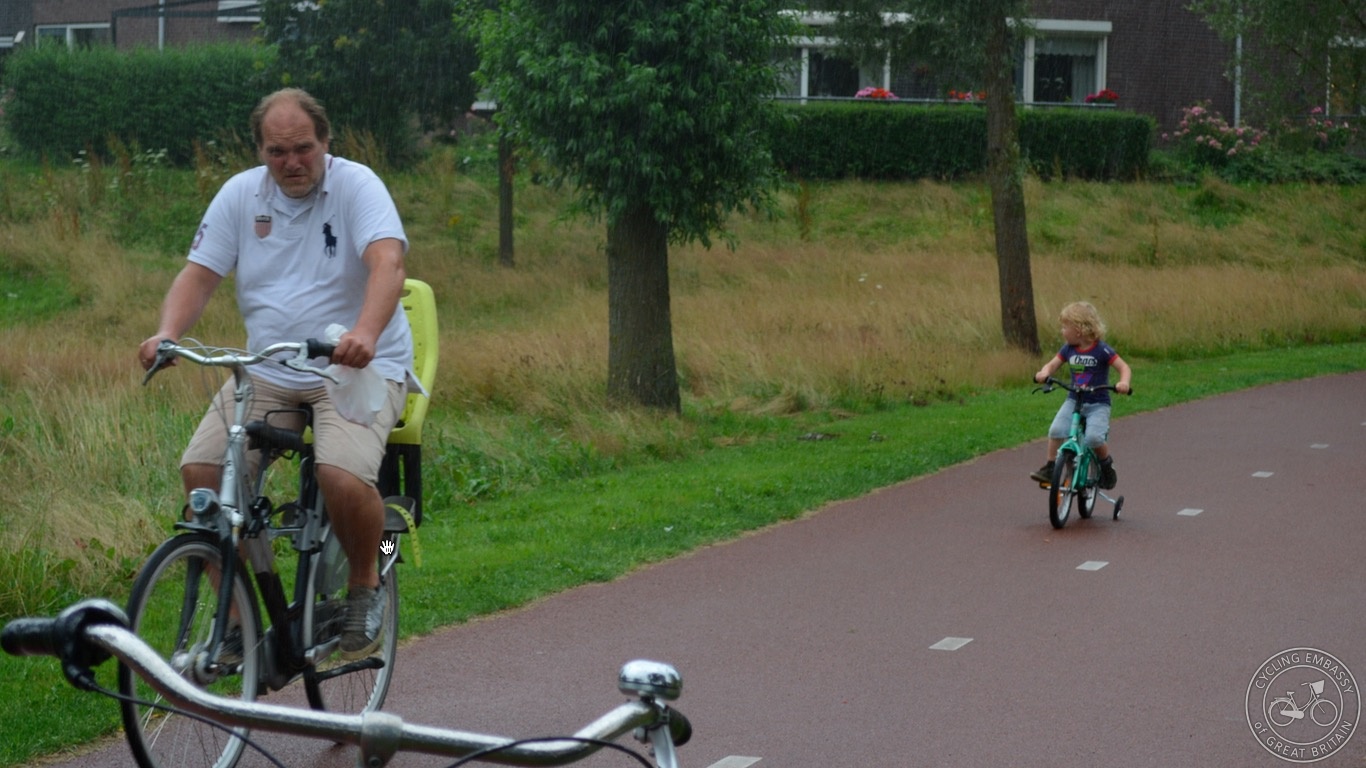
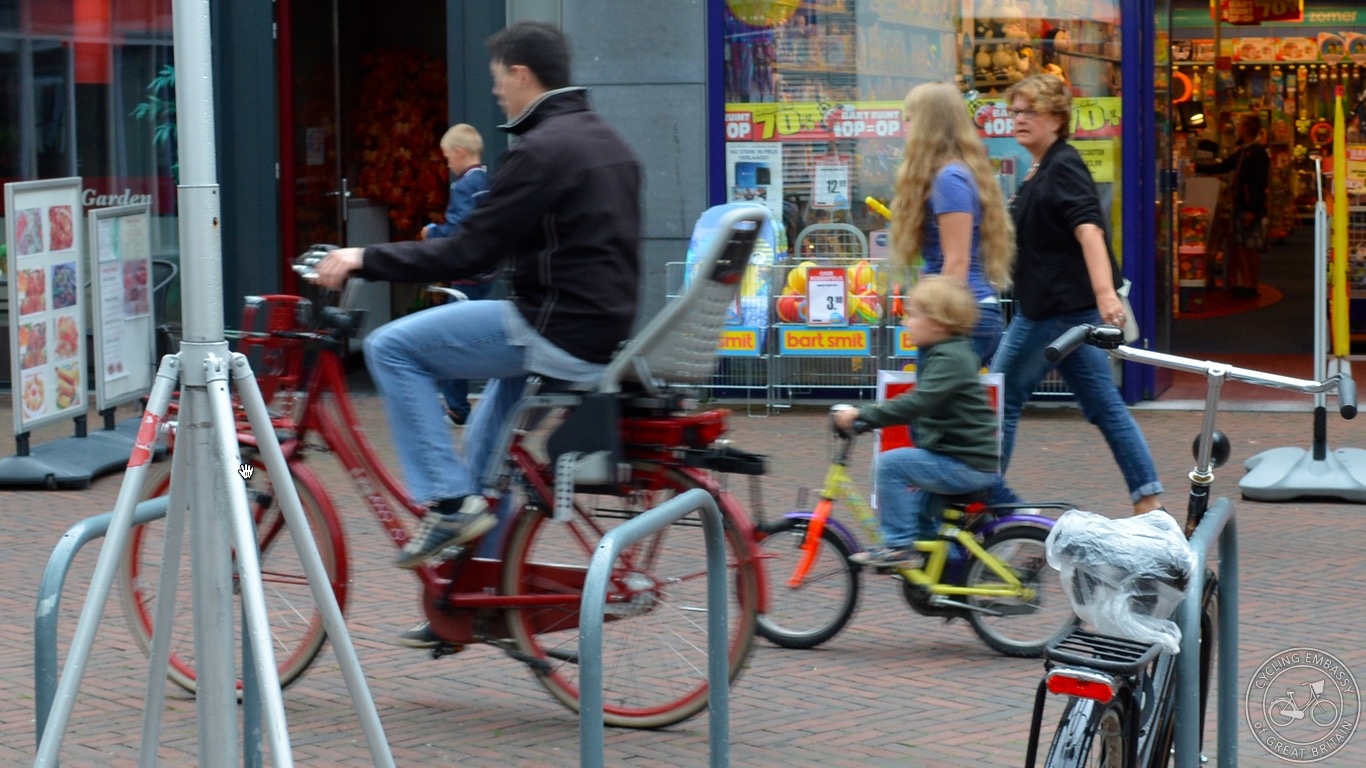
And of course the elderly cycle around without even thinking about it, in much the same way. Children are more vulnerable because they are inexperienced, and prone to misjudgements and mistakes, while the elderly are obviously more physically vulnerable should they be involved in a collision. Cycling is safe for both these groups; there is no skewing of the safety record like there is in Britain simply by elimination, by these groups being removed from the general cycling population.
Cycling is something that people choose to do, as and when it suits them. I doubt people in Assen identify as 'cyclists'. They all drive, walk, cycle or take public transport, depending on what is the best tool for the job. Cycling is so extraordinarily popular not because other forms of transport have been squashed or squeezed, but because it is simply enabled, on equal terms.
It is very easy to drive around Assen, and to drive into the city centre and to park. Assen is by no means 'anti car'. There is a fast inner ring road, and direct routes into the centre, for motor traffic. If you want to drive your car around, there's nothing stopping you. Parking is very cheap, or even free, and this is largely because demand for parking is so very much lower compared to Britain, due to the ease of cycling. There were plenty of spaces in this large subterranean car park below a supermarket, even on a Saturday, despite it being free.
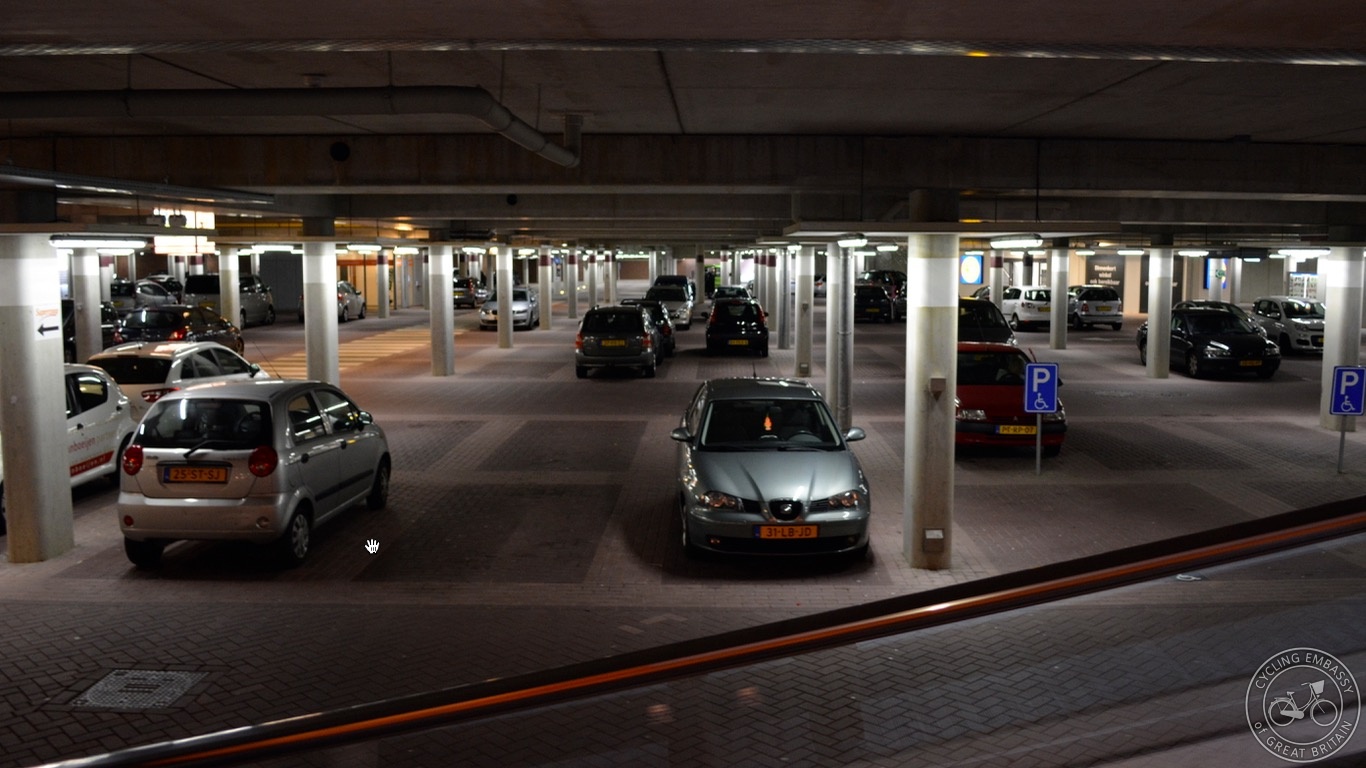
Crucially, however, this ease of driving doesn't translate into motor traffic and cycling being pushed into the same space. The separation of the two modes is meticulous; indeed, more generally, motor traffic is kept away from people. Here, the city's ring road has been raised up onto a bridge, allowing easy passage from the city out to a large new suburb.

And that meticulous separation of big or fast roads extends to noise pollution; noise barriers further insulate human beings away from motor traffic.
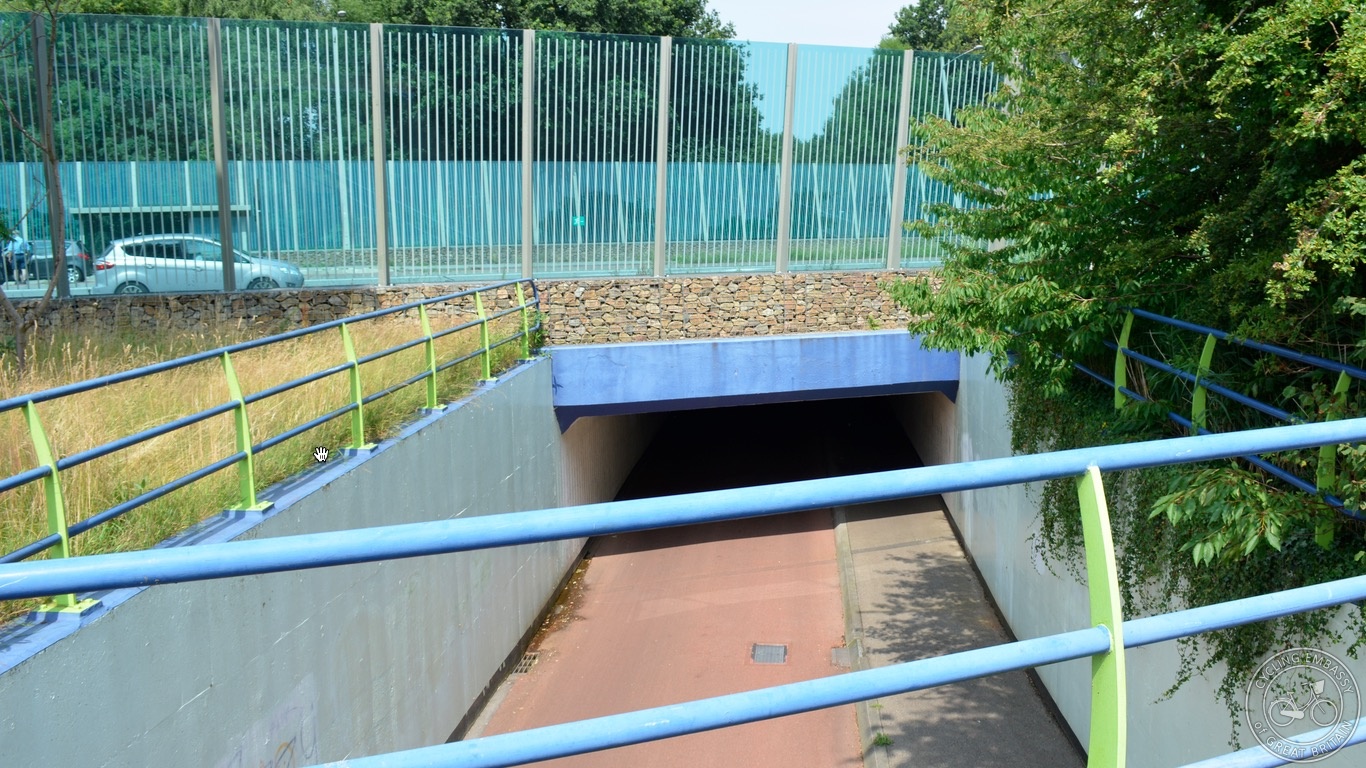
These are not the murky, dank kind of underpasses we are used to in Britain, underpasses built grudgingly as a a token effort, to keep pedestrians out of the way, with minimal regard for their comfort or safety. They are wonderful to breeze through, with clear sightlines, open and spacious.
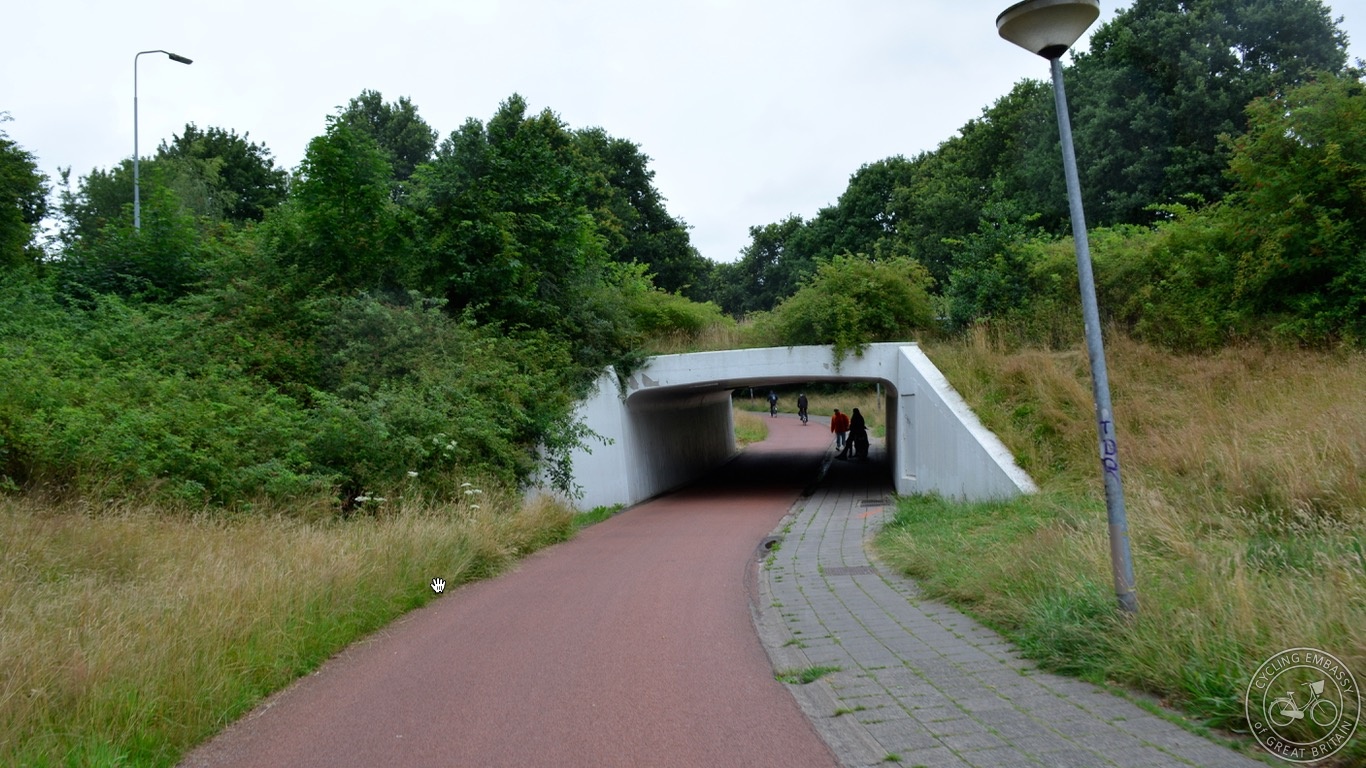
Tedious waits to cross these roads are unnecessary, and because of the total separation from motor traffic, the usual safety issues are removed.
What was also striking from a return visit to Assen - and what may be apparent from some of these photographs - is that this is not a high-density city, by any means. Quite the opposite. Assen feels very leafy and green, composed of detached housing, or estates with large open spaces between them. It's actually quite reminiscent of a British new town. The 'density' argument is a familiar one in explaining high cycling levels in the Netherlands, but Assen certainly seemed just as 'sprawling' (if not more so) than an equivalent British town or city of similar size. This isn't to say that cycling levels wouldn't be any higher in Assen if it was of a greater density (they might well be), just that 'density' does not account for the huge difference in cycling levels between Assen and the town where I live, which is of a very similar character.
Despite this relatively low density, it is quick and easy to get around, principally because cycling from A to B does not involve any stopping or waiting. On cycle routes, traffic lights are generally low in number, or non-existent, thanks to 'unravelling'. Streets that form routes for cycling do not form routes for motor traffic, meaning that the volume of motor traffic is not so high that traffic lights would be required.

And, as already touched upon, where major roads have to be crossed, the solution is almost always grade separation, meaning no delay. If traffic signals are involved, waits are not long, and crossings are direct, and single-stage.

The benefits of this kind of system mean great individual mobility, whether people choose to use a car, a bicycle, or some other form of personal transport. Indeed, infrastructure designed for cycling is an exact fit for all those modes of transport that have an uncertain place on British roads and streets. They can travel around the city with ease, on equal terms with everyone else.
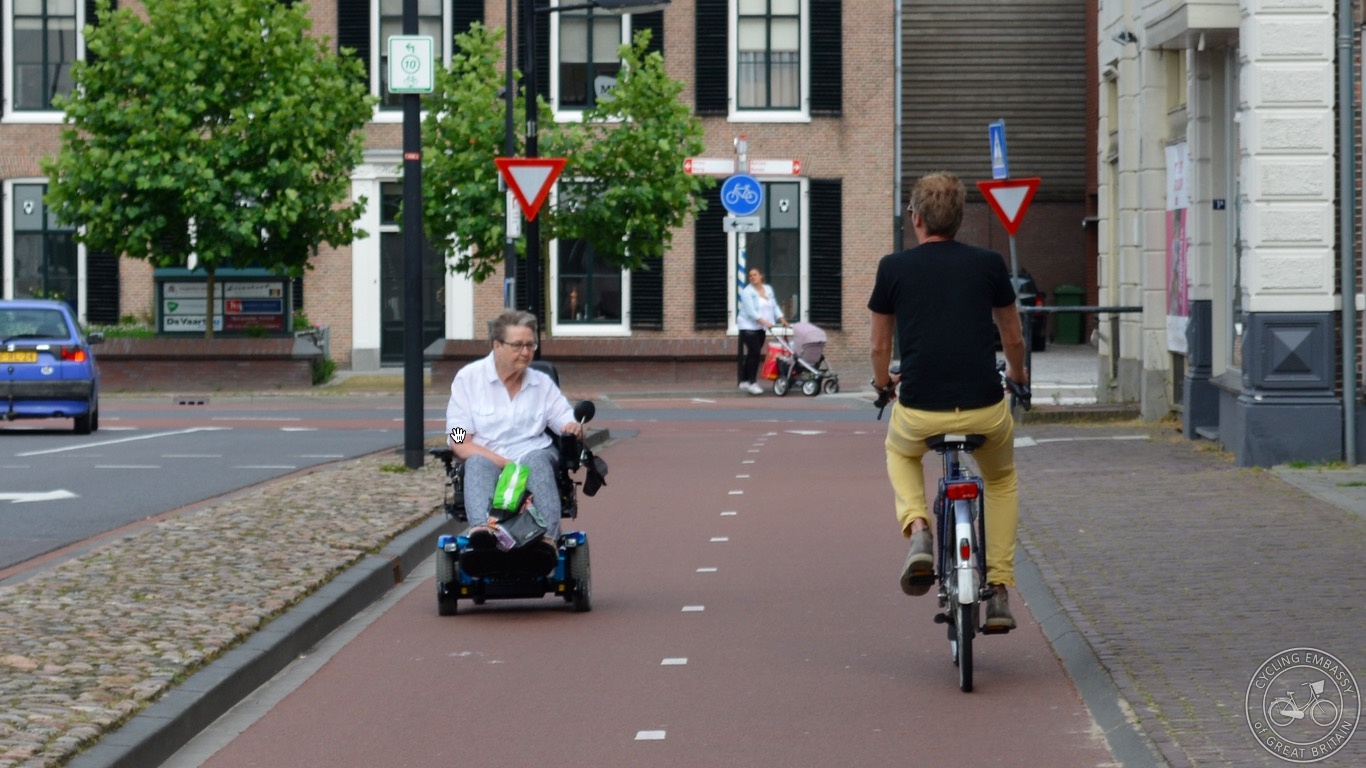

It's not all sunny, however. David took us to a number of new locations in both Assen and Groningen which featured new cycling 'infrastructure' of a low quality, something that would fail the test for many of my 'non cycling' friends and relatives as an environment they would be happy to cycle in. Particularly, this tended to involve painted lanes on quite busy roads, often with enormously wide footways, which Dutch drivers will quite happily drive in, or park in.


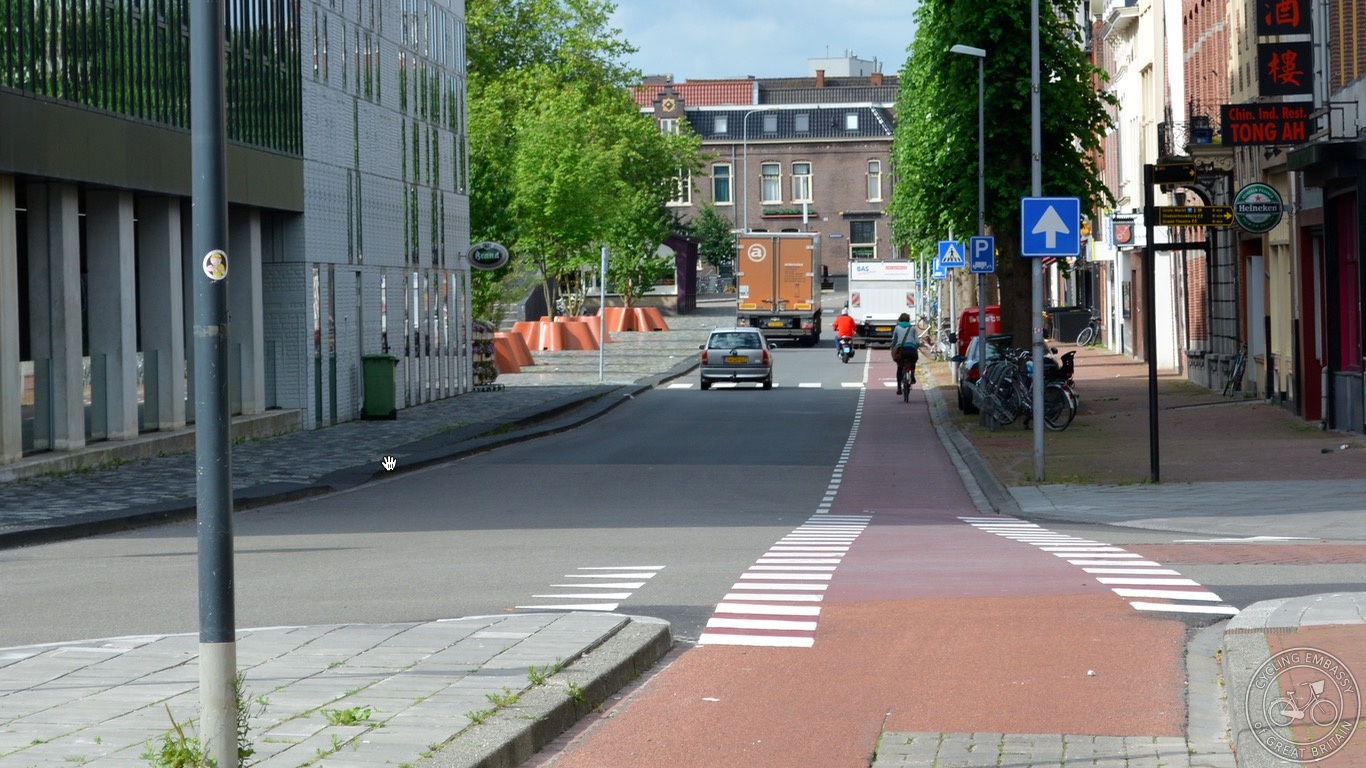
To repeat, these are all new. Also new are the short bridges in busy locations in Assen city centre, without any separate footway, and far too narrow to allow comfortable sharing between people walking and cycling.

These mistakes even extend to cycle parking; the new development shown above with the very wide pavements and cycle lanes on a busy road with the yellow HGV allocated the same amount of space to motorbike parking as it did to cycle parking, in an enormous undeground car park - with predictable results.

The impression was - remarkably - akin to the way cycling might be treated in Britain; not taken seriously as a mode of transport in its own right. David's view is that an element of complacency is creeping into the way the Dutch design their towns and cities; the experienced planners from the 70s and 80s are retiring, replaced by people of a new generation who might be more inclined to take high levels of cycling for granted, and might think less critically about the quality of design required to nurture, maintain and increase those levels of cycling.
'Shared space' has also been 'sent back' to the Netherlands, packaged up as a way of redesigning main roads without including cycling infrastructure.
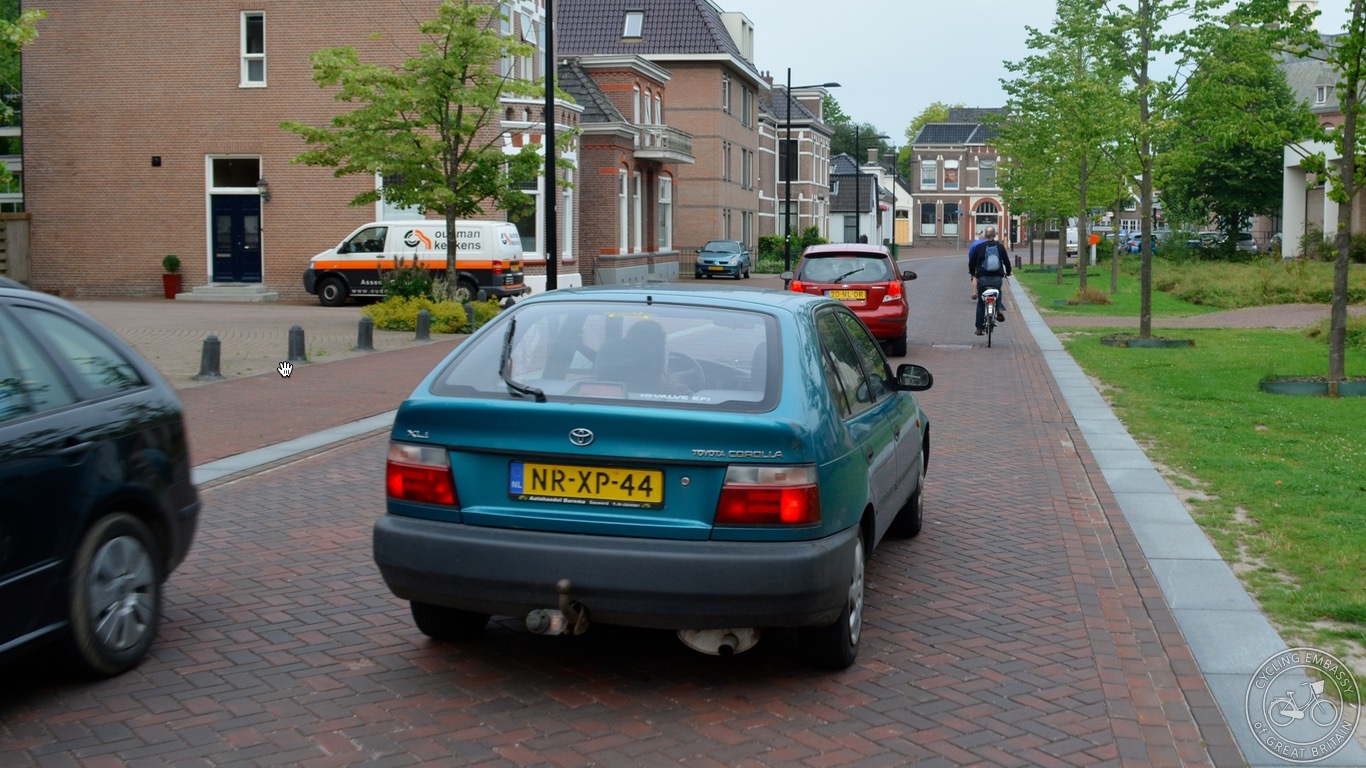
Unsurprisingly this leads to cycling on the footway, something really quite unsatisfactory when cycling levels are so high. It's not appropriate for walking and cycling to be mixed in this way, even less so when people are cycling in large numbers.
Cycling is not innate to the Netherlands. It is just as fragile as it is in Britain, responsive to changes in the quality of the physical environment. After all, the Dutch are remarkably like us. They plaster 'stay out of my blind spot' stickers on their HGVs.
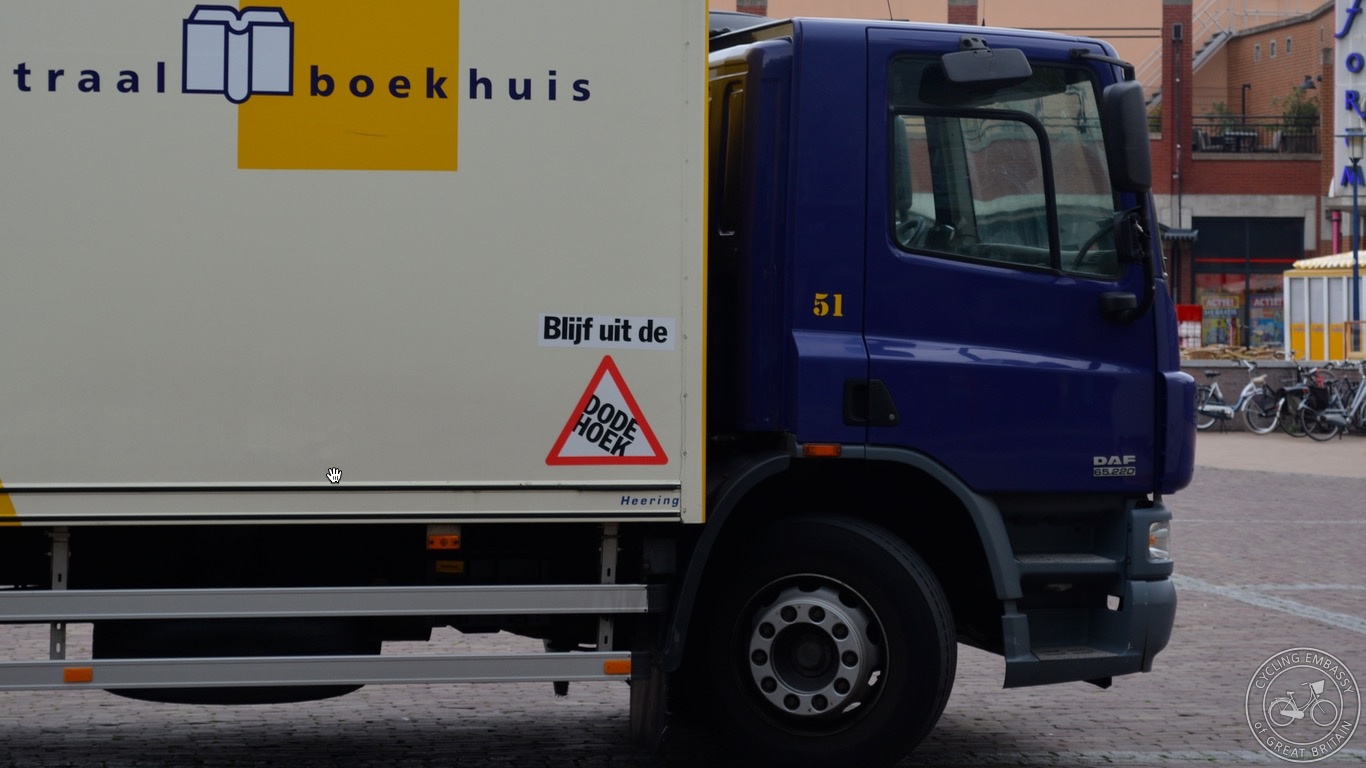
Just like us, a sizeable percentage of the population are motor vehicle-mad - we witnessed an enormous 'truck fest' at the Assen TT circuit, with people arriving early to take a look at the new and vintage lorries, arriving by car, and of course by bike.
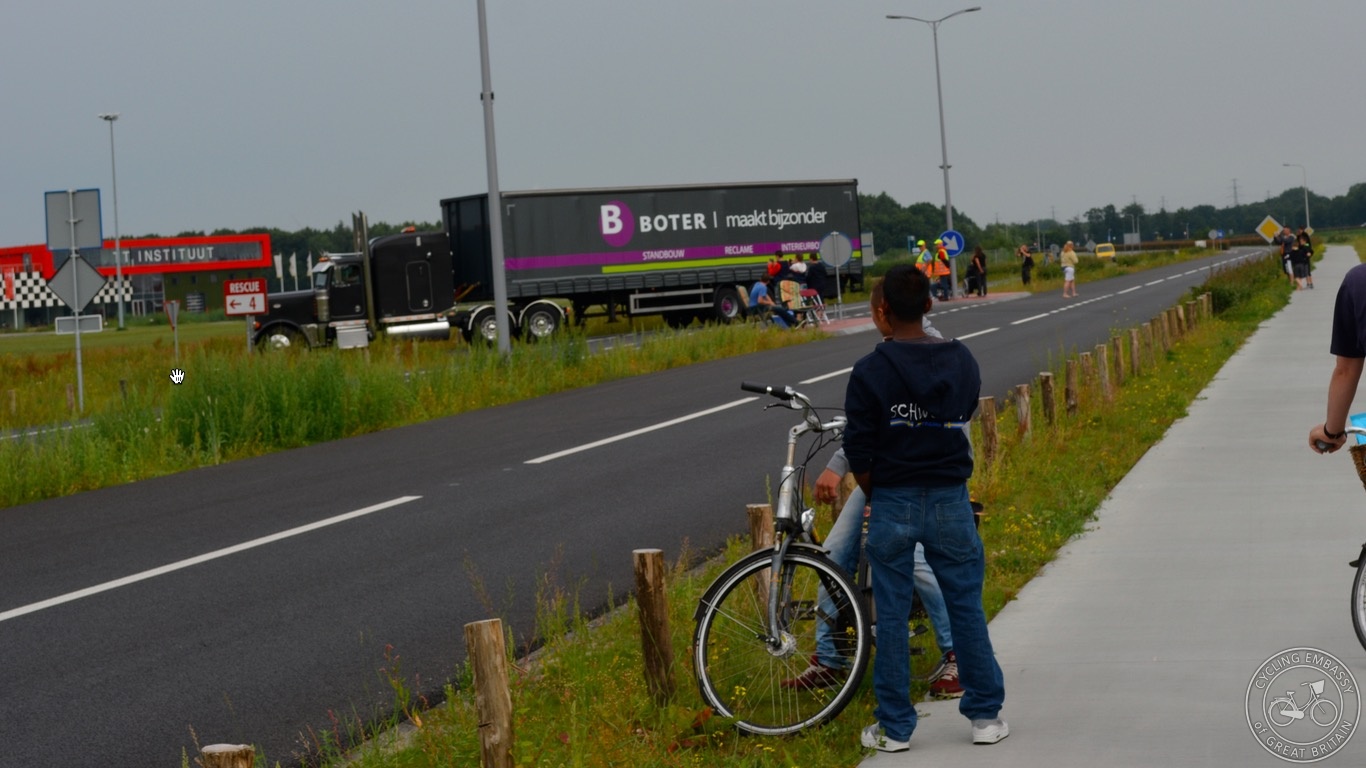
And they make mistakes behind the steering wheels of their cars, just like us, pulling out of junctions and nearly crashing into people cycling in places where the 'task load' is too high - where the driver has to deal with people cycling and driving from multiple directions, at once.

It's not respect, or awareness, or 'strict liability' that generally prevents these kinds of incidents from occurring - this female driver will undoubtedly be someone who rides a bike around Assen herself - but superior design, that greatly reduces or eliminates the chances of them happening in the first place. This innocuous-looking junction (by British standards) is actually the worst in Assen for cycle collisions. Tellingly, a relatively dangerous junction in Assen is one that looks relatively safe, to British eyes.
So what actually makes the difference between us and them is the wonderful physical environment that enables and allows cycling, and makes it an easy, safe and obvious choice, as well as offering personal freedom and mobility for those people who choose not to use cars, or simply cannot use them. It needs to be appreciated and improved, just as we need to copy from the very best.
